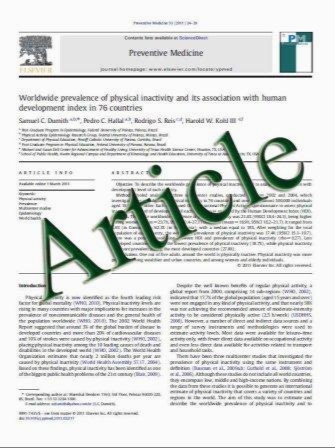Secondary prevention program for osteoporotic fractures and long-term adherence to bisphosphonates
- نوع فایل : کتاب
- زبان : انگلیسی
- مؤلف : S. Ojeda-Bruno & A. Naranjo & F. Francisco-Hernلndez & C. Erausquin & I. Rْa-Figueroa & J. C. Quevedo & C. Rodrیguez-Lozano
- چاپ و سال / کشور: 2010
Description
Summary Our purpose was to assess the impact of a secondary prevention program for osteoporotic fractures in patients with fragility fracture and to determine its effect on long-term compliance with bisphosphonate treatment. Persistence with bisphosphonate use was 71%. Attending follow-up visits was the only variable significantly associated with adherence to bisphosphonates. Introduction The aim of this study is to assess the impact a secondary prevention program for osteoporotic fractures in a prospective cohort of patients with at least one fragility fracture and to determine the effect of this intervention on long-term compliance with bisphosphonate treatment. Methods All patients older than 50 years with a fragility fracture attended at the emergency department over a 2-year period were appointed for a clinical visit through a telephone call. Two follow-up controls at 4 and 12 months were scheduled. After a mean of 4 years, a telephone survey was conducted to assess compliance with treatment. Results Of 683 eligible patients, 380 (55.6%) were visited at the hospital. Previous treatment with bisphosphonates was recorded in 17.9% of patients. DXA scan was considered normal in 61 patients and revealed osteopenia in 184 and osteoporosis in 135. Pharmacological treatment was indicated in 90% of patients (alendronate in 76%). Among 241 patients who participated in the survey, eight patients had new fractures (four were on treatment with bisphosphonates and four had discontinued treatment). Of 187 patients in which bisphosphonates were prescribed at the initial visit, 133 (71.1%) continued using bisphosphonates. Attendance of scheduled visits was associated with adherence to bisphosphonates (odds ratio, 3.33; 95% confidence interval, 2.99–3.67). Conclusions The efficacy of the program to recruit patients was 55%. In patients visited at the hospital, treatment with bisphosphonates increased from 17.9% to 76%. Persistence with bisphosphonate use after a mean of 4 years was 71%. Attending follow-up visits was significantly associated with adherence to bisphosphonates.
Osteoporos Int (2011) 22:1821–1828 DOI 10.1007/s00198-010-1414-z Received: 12 May 2010 / Accepted: 3 August 2010 / Published online: 6 October 2010


